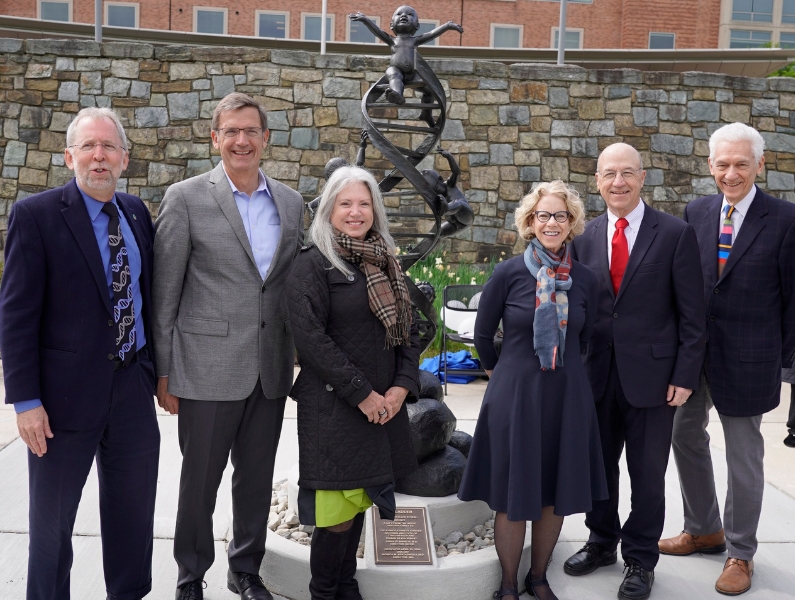
On April 25, a new sculpture was unveiled in front of the NIH Clinical Center in an uncommon confluence of National DNA Day and Take Your Child to Work Day. “The Ladder” is a 7-foot high, 700-pound sculpture which features four babies climbing a DNA helix, reflecting the power of genetics to advance the health of children.
“The Ladder” was a chance discovery by Dr. Diana W. Bianchi, director of the National Institute of Child Health and Human Development, when visiting Vanderbilt Children’s Hospital in 2010.
As a neonatologist and a geneticist, Bianchi was immediately drawn to the piece and wanted to find out more about it. After a bit of sleuthing, she was able to track down the artist Mary Ellen Scherl. They eventually met in Boston.
Over time they became friends and Bianchi learned of Sherl’s personal mission to track down her birth family.
Scherl had been adopted and was undertaking commercial DNA testing as well as genealogical study to learn more about her family of origin—and Bianchi was uniquely positioned and skilled to help Scherl. By the end of 2016, they were able to definitively locate Scherl’s biological mother and father.
They were also able to connect with Scherl’s brother—Dr. John Constantino—a child psychiatrist, who turned out to be the director of the Intellectual and Developmental Disabilities Research Center at Washington University, which was funded by NICHD, the institute that Bianchi now directs.
“The Ladder” itself also had a sibling: an identical sculpture that resided on the artist’s estate. In deep appreciation Scherl generously donated it to the Clinical Center.
Fittingly, the unveiling in front of the Clinical Center teamed with families and children. The work is a testament to connection, Bianchi said. “It's not just a sculpture, it’s a story about finding your family.”
“This sculpture is indeed powerfully symbolic of the fundamental reason for our existence,” said Clinical Center CEO Dr. James Gilman.
- Dan Silber
Watch a short clip of the unveiling

